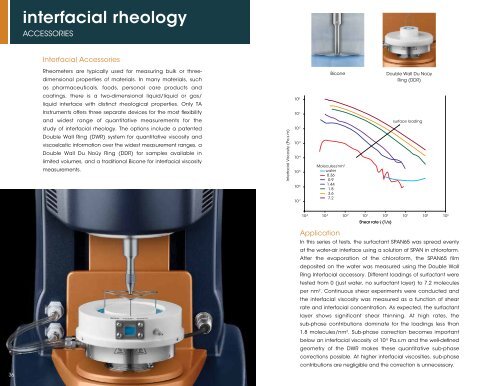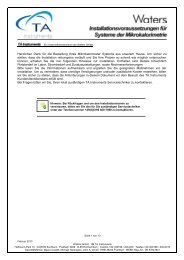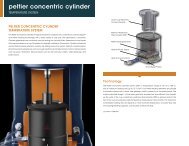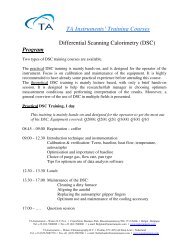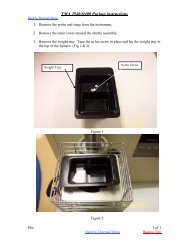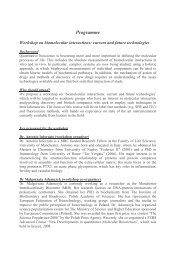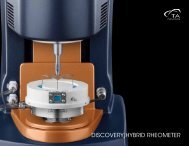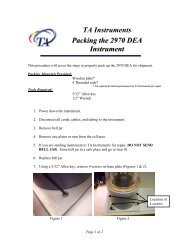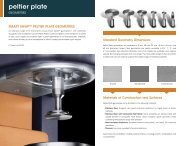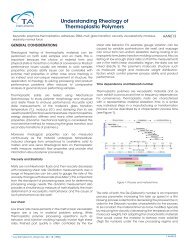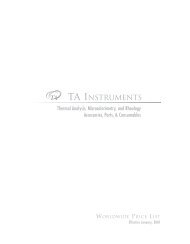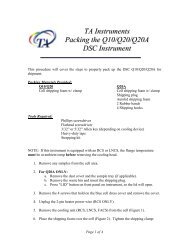discovery hybrid rheometers temperature systems ... - TA Instruments
discovery hybrid rheometers temperature systems ... - TA Instruments
discovery hybrid rheometers temperature systems ... - TA Instruments
You also want an ePaper? Increase the reach of your titles
YUMPU automatically turns print PDFs into web optimized ePapers that Google loves.
interfacial rheologyACCESSORIESInterfacial AccessoriesRheometers are typically used for measuring bulk or threedimensionalproperties of materials. In many materials, suchas pharmaceuticals, foods, personal care products andcoatings, there is a two-dimensional liquid/liquid or gas/liquid interface with distinct rheological properties. Only <strong>TA</strong><strong>Instruments</strong> offers three separate devices for the most flexibilityand widest range of quantitative measurements for thestudy of interfacial rheology. The options include a patentedDouble Wall Ring (DWR) system for quantitative viscosity andviscoelastic information over the widest measurement ranges, aDouble Wall Du Noüy Ring (DDR) for samples available inlimited volumes, and a traditional Bicone for interfacial viscositymeasurements.Interfacial Viscosity (Pa.s.m)10 010 -110 -210 -310 -410 -510 -6BiconeMolecules/nm 2water0.360.91.441.83.67.2Double Wall Du NoüyRing (DDR)surface loading10 -7 10 -4 10 -3 10 -2 10 -1 10 0 10 1 10 2 10 3.Shear rate γ (1/s)36ApplicationIn this series of tests, the surfactant SPAN65 was spread evenlyat the water-air interface using a solution of SPAN in chloroform.After the evaporation of the chloroform, the SPAN65 filmdeposited on the water was measured using the Double WallRing Interfacial accessory. Different loadings of surfactant weretested from 0 (just water, no surfactant layer) to 7.2 moleculesper nm 2 . Continuous shear experiments were conducted andthe interfacial viscosity was measured as a function of shearrate and interfacial concentration. As expected, the surfactantlayer shows significant shear thinning. At high rates, thesub-phase contributions dominate for the loadings less than1.8 molecules/nm 2 . Sub-phase correction becomes importantbelow an interfacial viscosity of 10 -5 Pa.s.m and the well-definedgeometry of the DWR makes these quantitative sub-phasecorrections possible. At higher interfacial viscosities, sub-phasecontributions are negligible and the correction is unnecessary.


